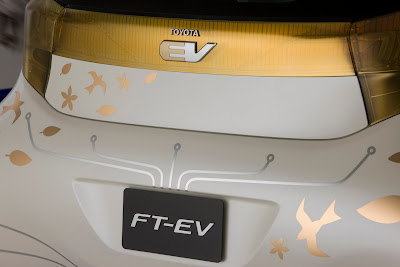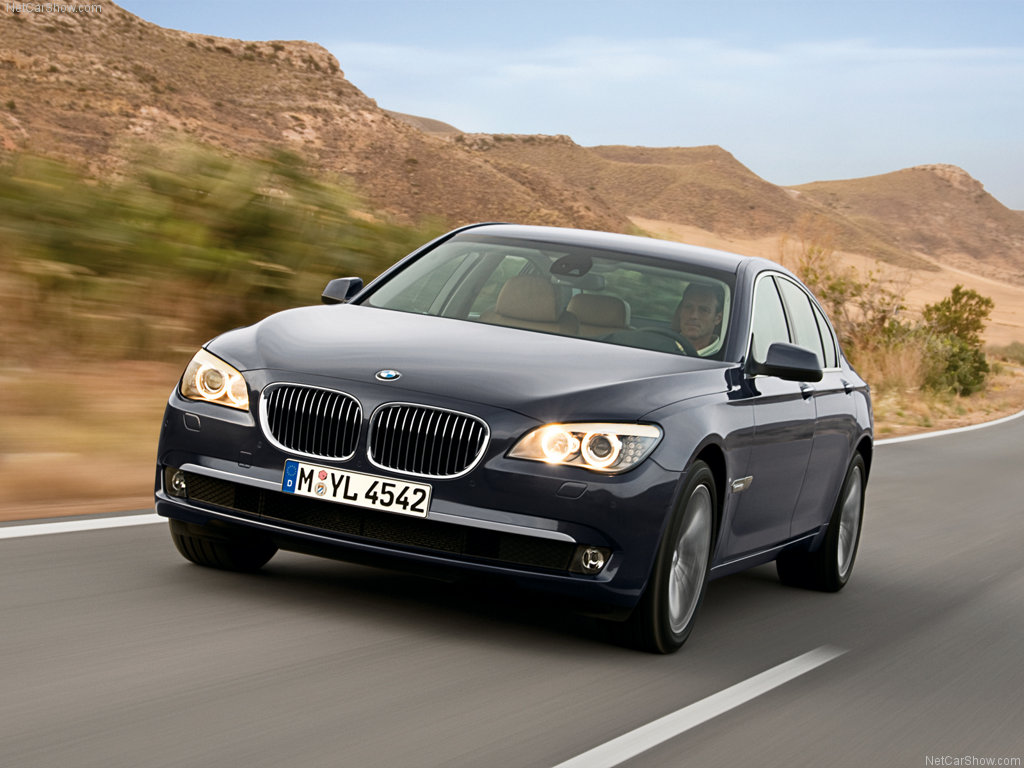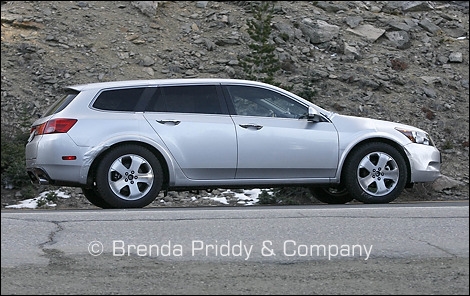
Toyota Motor Sales (TMS), U.S.A., Inc. today announced that it will display the Toyota FT-EV concept on opening Media Day at the North American International Auto Show (NAIAS), confirming its plan to launch an urban commuter battery-electric vehicle (BEV) by 2012. This announcement, coupled with its compressed natural gas powered Camry Hybrid concept display at the 2008 Los Angeles Auto Show, signal Toyota’s intention to broaden the scope of its advanced alternative-fuel vehicle development.

“Now, more than ever, while we are so focused on the pressing issues of the moment, we cannot lose sight of our future,” said Irv Miller, TMS Group Vice President, Environmental and Public Affairs. “Nowhere is this more important than with our industry’s duty and commitment to provide true sustainable mobility with vehicles that significantly reduce fuel consumption, our carbon footprint and overall greenhouse gases.” The FT-EV concept shares its platform with the revolutionary-new iQ urban commuter vehicle. Already a huge hit in Japan, the iQ is lightweight and seats four passengers in comfort and security, while delivering exceptional mileage, sporty performance, unique refinements and a fun, youthful image.

Toyota’s FT-EV concept imagines an urban dweller, driving up to 50 miles between home, work and other forms of public transportation, such as high-speed rail. Although, for now, the FT-EV remains a pure concept, it represents a natural pairing of product strategies.

“Last summer’s four-dollar-a-gallon gasoline was no anomaly. It was a brief glimpse of our future,” said Miller. “We must address the inevitability of peak oil by developing vehicles powered by alternatives to liquid-oil fuel, as well as new concepts, like the iQ, that are lighter in weight and smaller in size. This kind of vehicle, electrified or not, is where our industry must focus its creativity.” Although BEVs and new smaller vehicles like the iQ will be a key component of Toyota’s sustainable mobility strategy, the conventional gas-electric hybrid, like the all new third-generation Prius, is considered Toyota’s long-term core powertrain technology.

Last year, Toyota announced that it planned to sell one million gas-electric hybrids per year sometime during the early 2010s. To accomplish this, Toyota will launch as many as 10 new hybrid models by the early 2010s, in various global markets. The new third-generation Toyota Prius and all new Lexus HS250h, both debuting in Detroit, are the first two examples of that effort. Also, last year, Toyota announced that it would roll-out a large number of plug-in hybrid vehicles (PHVs) to global lease-fleet customers in 2010. That schedule has been moved up.

Beginning in late 2009, Toyota will start global delivery of 500 Prius PHVs powered by lithium-ion batteries. Of these initial vehicles, 150 will be placed with U.S. lease-fleet customers. The first-generation lithium-ion batteries powering these PHVs will be built on an assembly line at Toyota’s PEVE (Panasonic EV Energy Company, LTD) battery plant, a joint-venture production facility in which Toyota owns 60 percent equity. During its development, the new Prius was designed and engineered to package either the lithium-ion battery pack with plug-in capability, or the nickel-metal hydride battery for the conventional gas-electric system. The 500 PHVs arriving globally in late 2009 will be used for market and engineering analysis. Lease–fleet customers will monitor the performance and durability of the first-generation lithium-ion battery, while offering real world feedback on how future customers might respond to the plug-in process. “Future customers will have high expectations for these emerging technologies. This Prius PHV fleet program is a key first step in confirming how and when we might bring large numbers of plug-in hybrids to global markets,” said Miller. “Our business is no longer about simply building and selling cars and trucks. It is about finding solutions to mobility challenges today and being prepared for more daunting challenges in our very near future.”
 Exclusive BMW 7 Car
Exclusive BMW 7 Car BMW 7 Series Picture
BMW 7 Series Picture Vute BMW 7 Series Car
Vute BMW 7 Series Car New BMW 7 Series
New BMW 7 Series Inside Car Latest BMW 7
Inside Car Latest BMW 7
 The Fit EV is designed to meet the daily driving needs of the average metropolitan commuter and utilizes the same 5-passenger layout found in the popular Fit hatchback. When the Fit EV production model is introduced, it will be powered by a lithium-ion battery and coaxial electric motor.
The Fit EV is designed to meet the daily driving needs of the average metropolitan commuter and utilizes the same 5-passenger layout found in the popular Fit hatchback. When the Fit EV production model is introduced, it will be powered by a lithium-ion battery and coaxial electric motor. The Fit EV is designed to be easy and convenient to charge. Battery recharging can be accomplished in less than 12 hours when using a conventional 120-volt outlet, and less than six hours when using a 240-volt outlet.
The Fit EV is designed to be easy and convenient to charge. Battery recharging can be accomplished in less than 12 hours when using a conventional 120-volt outlet, and less than six hours when using a 240-volt outlet. The history of the 612 Scaglietti started in 2004 when Ferrari chose it as a successor for the smaller 456 M. It was designed as a 4 seater gran tourer with adequate space in the rear seats for adults. But, if we’re going to be honest, the 612 Scaglietti features the most out-dated design in all of the current Ferrari line-up.
The history of the 612 Scaglietti started in 2004 when Ferrari chose it as a successor for the smaller 456 M. It was designed as a 4 seater gran tourer with adequate space in the rear seats for adults. But, if we’re going to be honest, the 612 Scaglietti features the most out-dated design in all of the current Ferrari line-up. The current 612 Scaglietti is powered by a 5,748 cc V12 engine that delivers 530 HP and 588 Nm of torque. But the next model will adopt a hybrid drive train that will combine a V12 front engine that delivers a total of 550 HP with a 100-HP electric motor at the rear. This new system will help improve fuel consumption by at least 35%.
The current 612 Scaglietti is powered by a 5,748 cc V12 engine that delivers 530 HP and 588 Nm of torque. But the next model will adopt a hybrid drive train that will combine a V12 front engine that delivers a total of 550 HP with a 100-HP electric motor at the rear. This new system will help improve fuel consumption by at least 35%.














 Toyota Motor Sales (TMS), U.S.A., Inc. today announced that it will display the Toyota FT-EV concept on opening Media Day at the North American International Auto Show (NAIAS), confirming its plan to launch an urban commuter battery-electric vehicle (BEV) by 2012. This announcement, coupled with its compressed natural gas powered Camry Hybrid concept display at the 2008 Los Angeles Auto Show, signal Toyota’s intention to broaden the scope of its advanced alternative-fuel vehicle development.
Toyota Motor Sales (TMS), U.S.A., Inc. today announced that it will display the Toyota FT-EV concept on opening Media Day at the North American International Auto Show (NAIAS), confirming its plan to launch an urban commuter battery-electric vehicle (BEV) by 2012. This announcement, coupled with its compressed natural gas powered Camry Hybrid concept display at the 2008 Los Angeles Auto Show, signal Toyota’s intention to broaden the scope of its advanced alternative-fuel vehicle development. “Now, more than ever, while we are so focused on the pressing issues of the moment, we cannot lose sight of our future,” said Irv Miller, TMS Group Vice President, Environmental and Public Affairs. “Nowhere is this more important than with our industry’s duty and commitment to provide true sustainable mobility with vehicles that significantly reduce fuel consumption, our carbon footprint and overall greenhouse gases.” The FT-EV concept shares its platform with the revolutionary-new iQ urban commuter vehicle. Already a huge hit in Japan, the iQ is lightweight and seats four passengers in comfort and security, while delivering exceptional mileage, sporty performance, unique refinements and a fun, youthful image.
“Now, more than ever, while we are so focused on the pressing issues of the moment, we cannot lose sight of our future,” said Irv Miller, TMS Group Vice President, Environmental and Public Affairs. “Nowhere is this more important than with our industry’s duty and commitment to provide true sustainable mobility with vehicles that significantly reduce fuel consumption, our carbon footprint and overall greenhouse gases.” The FT-EV concept shares its platform with the revolutionary-new iQ urban commuter vehicle. Already a huge hit in Japan, the iQ is lightweight and seats four passengers in comfort and security, while delivering exceptional mileage, sporty performance, unique refinements and a fun, youthful image. Toyota’s FT-EV concept imagines an urban dweller, driving up to 50 miles between home, work and other forms of public transportation, such as high-speed rail. Although, for now, the FT-EV remains a pure concept, it represents a natural pairing of product strategies.
Toyota’s FT-EV concept imagines an urban dweller, driving up to 50 miles between home, work and other forms of public transportation, such as high-speed rail. Although, for now, the FT-EV remains a pure concept, it represents a natural pairing of product strategies. “Last summer’s four-dollar-a-gallon gasoline was no anomaly. It was a brief glimpse of our future,” said Miller. “We must address the inevitability of peak oil by developing vehicles powered by alternatives to liquid-oil fuel, as well as new concepts, like the iQ, that are lighter in weight and smaller in size. This kind of vehicle, electrified or not, is where our industry must focus its creativity.” Although BEVs and new smaller vehicles like the iQ will be a key component of Toyota’s sustainable mobility strategy, the conventional gas-electric hybrid, like the all new third-generation Prius, is considered Toyota’s long-term core powertrain technology.
“Last summer’s four-dollar-a-gallon gasoline was no anomaly. It was a brief glimpse of our future,” said Miller. “We must address the inevitability of peak oil by developing vehicles powered by alternatives to liquid-oil fuel, as well as new concepts, like the iQ, that are lighter in weight and smaller in size. This kind of vehicle, electrified or not, is where our industry must focus its creativity.” Although BEVs and new smaller vehicles like the iQ will be a key component of Toyota’s sustainable mobility strategy, the conventional gas-electric hybrid, like the all new third-generation Prius, is considered Toyota’s long-term core powertrain technology. Last year, Toyota announced that it planned to sell one million gas-electric hybrids per year sometime during the early 2010s. To accomplish this, Toyota will launch as many as 10 new hybrid models by the early 2010s, in various global markets. The new third-generation Toyota Prius and all new Lexus HS250h, both debuting in Detroit, are the first two examples of that effort. Also, last year, Toyota announced that it would roll-out a large number of plug-in hybrid vehicles (PHVs) to global lease-fleet customers in 2010. That schedule has been moved up.
Last year, Toyota announced that it planned to sell one million gas-electric hybrids per year sometime during the early 2010s. To accomplish this, Toyota will launch as many as 10 new hybrid models by the early 2010s, in various global markets. The new third-generation Toyota Prius and all new Lexus HS250h, both debuting in Detroit, are the first two examples of that effort. Also, last year, Toyota announced that it would roll-out a large number of plug-in hybrid vehicles (PHVs) to global lease-fleet customers in 2010. That schedule has been moved up. Beginning in late 2009, Toyota will start global delivery of 500 Prius PHVs powered by lithium-ion batteries. Of these initial vehicles, 150 will be placed with U.S. lease-fleet customers. The first-generation lithium-ion batteries powering these PHVs will be built on an assembly line at Toyota’s PEVE (Panasonic EV Energy Company, LTD) battery plant, a joint-venture production facility in which Toyota owns 60 percent equity. During its development, the new Prius was designed and engineered to package either the lithium-ion battery pack with plug-in capability, or the nickel-metal hydride battery for the conventional gas-electric system. The 500 PHVs arriving globally in late 2009 will be used for market and engineering analysis. Lease–fleet customers will monitor the performance and durability of the first-generation lithium-ion battery, while offering real world feedback on how future customers might respond to the plug-in process. “Future customers will have high expectations for these emerging technologies. This Prius PHV fleet program is a key first step in confirming how and when we might bring large numbers of plug-in hybrids to global markets,” said Miller. “Our business is no longer about simply building and selling cars and trucks. It is about finding solutions to mobility challenges today and being prepared for more daunting challenges in our very near future.”
Beginning in late 2009, Toyota will start global delivery of 500 Prius PHVs powered by lithium-ion batteries. Of these initial vehicles, 150 will be placed with U.S. lease-fleet customers. The first-generation lithium-ion batteries powering these PHVs will be built on an assembly line at Toyota’s PEVE (Panasonic EV Energy Company, LTD) battery plant, a joint-venture production facility in which Toyota owns 60 percent equity. During its development, the new Prius was designed and engineered to package either the lithium-ion battery pack with plug-in capability, or the nickel-metal hydride battery for the conventional gas-electric system. The 500 PHVs arriving globally in late 2009 will be used for market and engineering analysis. Lease–fleet customers will monitor the performance and durability of the first-generation lithium-ion battery, while offering real world feedback on how future customers might respond to the plug-in process. “Future customers will have high expectations for these emerging technologies. This Prius PHV fleet program is a key first step in confirming how and when we might bring large numbers of plug-in hybrids to global markets,” said Miller. “Our business is no longer about simply building and selling cars and trucks. It is about finding solutions to mobility challenges today and being prepared for more daunting challenges in our very near future.”